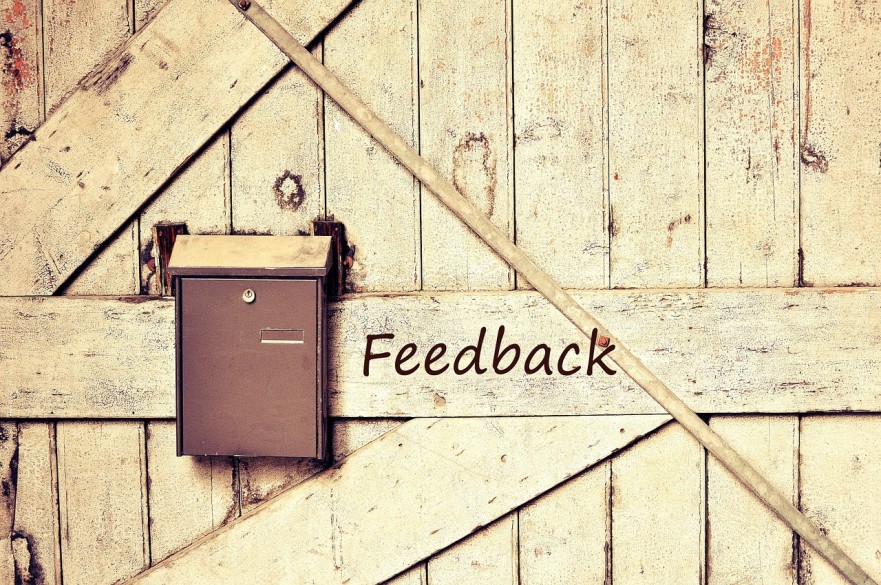Schools are working harder than ever to find ways to improve the learning for their students. Schools are experimenting with technology implementation, lowering class size, even implementing mindfulness, and while each of these practices may be wonderful, there is no actual evidence that they improve student achievement. According to John Hattie’s meta-research, these and many other well-intentioned ideas and investments don’t impact how much more a student can learn by the end of a year.
Of the 250 areas Dr. Hattie has researched, one of the strongest influences on how much a student will learn in a year is feedback. Feedback has a .79 effect size on learning, nearly double the average year’s growth of .40. One approach to help students achieve more is to be clear with them about what they are doing well and what they can do better.
However, there is ample room for teachers to improve when it comes to giving feedback, and we must look to administrators to set the feedback loop for a school. In this way, schools become places where adults and children are always learning.
Opposed to vs. Open to Feedback?
As the lead learner, administrators must constantly be on the lookout for feedback and know how to react to the feedback they receive. This means being receptive to formal feedback via surveys or community town halls as well as informal feedback by being physically available. It might look like greeting students or parents as they enter campus each morning, or it may look like an administrator taking the temperature of a room after an intense staff meeting and then actively listening to concerns. It may even look like an administrator asking for feedback from a teacher after the administrator has shared the results of the teacher’s evaluation. It could be taking a few minutes and asking for the teacher to share something that the administrator has done during the year that has worked for him or her.
As an administrator, putting ourselves out there is only possible when there is a community of trust and when we are open to hearing both the good and bad. Willingness to listen is just the first step, a willingness to act on what we hear is the next step. It also means adjusting to what we learn from feedback. How do we internalize what our strengths are and what areas we can improve without feeling defensive? It is only when the lead learner sets the tone to be open to feedback that the school can engage with feedback and deep learning.
Leaders Providing Quality Feedback
As a teacher who has put everything into the perfect evaluation lesson there is nothing worse than getting a bland, “Mrs. Festa-Daigle is always on time and has gone out of her way to supervise three dances this year. She always has an objective on the board.” Ok, maybe getting a Forced Oreo is almost as bad. Don’t sandwich some real feedback into some niceties so my feelings aren’t hurt. Tell me what I need to improve on. Be real with me. Talk about my teaching and my impact.
Administrators must model giving good feedback to teachers both orally and in writing. I once was told that if I didn’t have time to give feedback, I didn’t have time to go observe a classroom. If I am not sharing meaningful areas of growth or areas of concern that need to be addressed, what good is my time in a classroom? If we expect teachers to give strong, timely feedback that positively impacts student performance than we better be giving strong, timely feedback to teachers that positively impacts teacher performance. Every once in a while, if I am hard pressed for feedback, I will ask a student what they are learning and how they know they are learning it. If that question can be answered, I am able to give some very powerful feedback to a teacher.
Teachers in a Feedback Culture
Feedback is very different from praise or corrective action. There are times where educators suffer from only being able to give praise or corrective action. I will admit, this was difficult, especially the year I had 190 students. Why couldn’t they just understand that 10/10 meant their writing showed me they had grasped the concept of federalism? Why can’t an underline let them know that I could see they were able to draw comparisons between two texts? Feedback is hard, let’s face it. Classes are not getting any smaller and teachers are pulled in more directions than ever. So how do we mindfully focus on feedback?
Feedback should be as specific as possible with an emphasis on the learning goal. What is that objective and how does feedback help students see where they accomplished it and where they can continue to improve? It is useful to track how students are progressing toward a goal over time. I always kept student work throughout the semester. It helped me and them reflect on where they started and where they finished.
Feedback should be as immediate as possible. Maybe a teacher doesn’t have time to hand-write feedback on every paper, but what about walking around and talking with each student during the period? What about scheduling conference time with students to talk about longer projects and check in with them along the way. There are a ton of tech tools that allow teachers to share feedback easily through video or text.
Help students learn to give one another feedback. This is part of the goal: creating reflective learners. Help students by developing tools with rubrics and questions along the way. Let them wrestle with some tools and begin to give one another and even themselves the feedback and reflection time they need to grow.
Finally, teachers must also be open to feedback from their students. This sometimes hurts and we may even rationalize all the reasons why their feedback couldn’t possibly be correct. However, stepping back and knowing that what they have to say means everything can change our classrooms for the better.
No Fear Feedback
Consider how healthy a school community would become if we open ourselves to feedback from others and when we can deliver it in a way that is meant to grow and develop others. A school with a built-in feedback loop is a school that is destined to grow. We should all lean into feedback, both the good and the bad. And, we should work to give others quality feedback that helps them tackle the next step.










Comments 6
This is definitely something I struggled with my first year. I felt like if I wasn’t asking teachers to switch their practice or I wasn’t engaging in dialogue around a topic, why couldn’t the teachers just assume that what they were doing was hitting the mark. I have found of course through time and in reading your article that everyone needs specific feedback at times because it helps us not to be left out in the wind attempting to figure out where we stand.
This reminds me a lot about my recent post, which was basically about how some colleauges frank feedback on my teaching sparked hope that a very bad year might still be saved by incorporating fairly easy adjustments to my daily teaching. Clearly, solid feedback improves our work at any point along the system.
Thank you for this article. This is a reinforecement of the power of accurate data and feedback. It should not be something that we are afraid off or run from. It can be a great help when properly understood and utilized. I appreciated hearing this from a different perspective.
At the heart of all of this is time. The feedback that mattered the most to me was from leaders who spent time with me, my students, and my learning environment. They spent time getting to know me and how best to push my practice forward. This was not achieved in one walk through or one formal pre-observation meeting. Many leaders are stretched thin and do not have the time to offer the feedback that helps their teachers get better, instead, seeing evaluations as another task on their to do list. This is, perhaps, one of the greatest arguments for true instructional coaching. But that’s another topic for another time.
I LOVE giving thorough and meaningful feedback. I want my students to flourish into outstanding writers, so I love give them feedback — even on their final papers with me.
But, as Jen points out in this discussion, it takes TIME! SO much time! I love that my administrators understand this, and accept that it takes time for me to get back grades. I love when my administrators take notice of my effort with the students, and acknowledge the time I must be devoting to each and every one of them.
Thank you for this post!
This is great Jaime and I love how you presented feedback from the different perspectives (student, teacher, admin). I truly believe when it comes to teacher feedback, one important element is that it provides a foundation for positive student and teacher relationships. When I provide quality feedback to my students, I want my students to know that I am genuinely concerned about them and their learning. I believe this enhances my students’ self-efficacy and provides an avenue for motivation. and as you mentioned, students providing me with their own feedback is just as important. In an ASCD article, the author writes, “Although the universal teacher lament that there’s no time for such feedback is understandable, remember that “no time to give and use feedback” actually means “no time to cause learning.” As we have seen, research shows that less teaching plus more feedback is the key to achieving greater learning.”